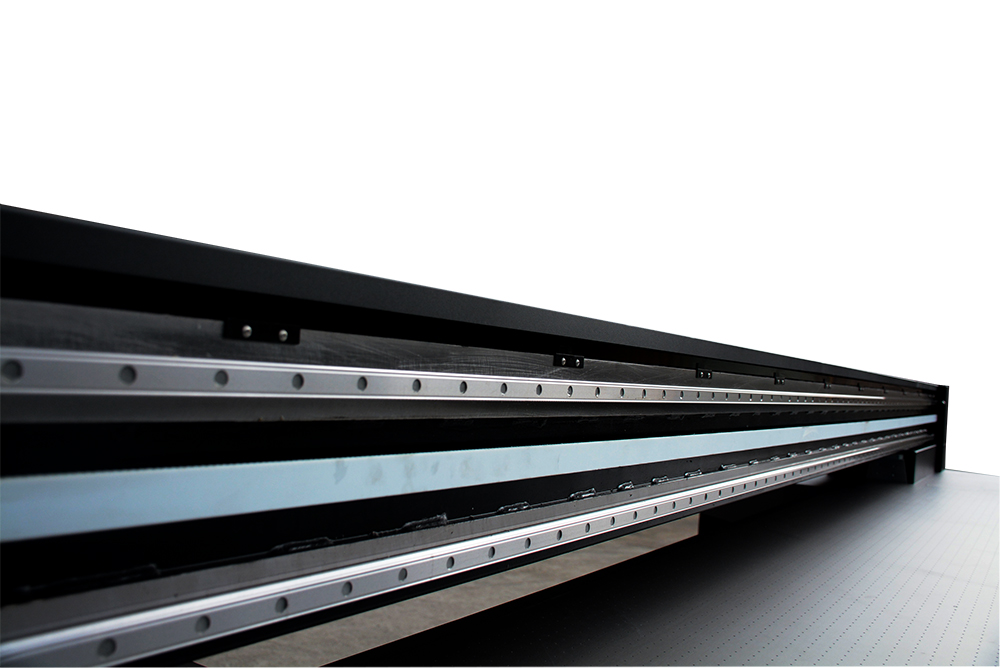How to Achieve Optimal Color Saturation with a UV Flatbed Printer
In the realm of digital printing, achieving optimal color saturation is paramount for producing vibrant, eye-catching, and professional-quality prints. This is particularly true when using a UV flatbed printer, which offers versatility in printing on a wide range of substrates and cures inks instantly with ultraviolet light. Color saturation refers to the purity and intensity of colors in a print, and it plays a crucial role in determining the overall visual appeal and impact of the final product. This article delves into the key factors and techniques to achieve optimal color saturation with a UV flatbed printer, focusing on printer settings, ink selection, substrate preparation, and post-processing considerations.

Understanding the Basics of Color Saturation
Color saturation, also known as chroma, measures the amount of gray in a color. A fully saturated color contains no gray and appears pure, while a desaturated color contains more gray and appears duller. In printing, achieving high color saturation involves ensuring that the inks used are capable of producing rich, vivid hues and that the printing process accurately reproduces these colors without compromise.
Printer Settings: The Foundation for Success
Resolution and DPI (Dots Per Inch)
Higher resolution settings generally result in finer detail and more accurate color reproduction. For UV flatbed printers, a resolution of at least 1200 dpi is recommended for optimal color saturation and clarity.
Ink Drop Size
Adjusting the ink drop size can significantly impact color saturation. Smaller ink drops allow for more precise control over color placement, leading to smoother gradients and more saturated colors. Ensure your printer settings are configured to use the smallest possible ink drop size for detailed work.
Print Speed
While faster print speeds are desirable for productivity, they can sometimes compromise color saturation. Slower print speeds allow for better ink absorption and more controlled curing, resulting in richer colors. Experiment with different speed settings to find the optimal balance between speed and quality.
Color Profiles and Calibration
Using accurate color profiles tailored to your specific printer and ink set is crucial. Regularly calibrate your printer to ensure that the colors displayed on your monitor match those printed on the substrate. This step helps maintain consistent color saturation across different prints.
Ink Selection: The Heart of Color Saturation
Pigment vs. Dye-Based Inks
Pigment-based inks generally offer better color saturation, durability, and resistance to fading compared to dye-based inks. They are ideal for outdoor applications where long-term color retention is essential.
Ink Viscosity
The viscosity of the ink affects how it flows and adheres to the substrate. Inks with the correct viscosity for your printer and substrate combination will provide more even color distribution and better saturation.
UV-Curable Inks
UV-curable inks are specifically formulated to cure instantly under ultraviolet light. They offer excellent color saturation, durability, and flexibility, making them ideal for a wide range of applications, from signage to fine art reproduction.
Substrate Preparation: The Canvas for Your Masterpiece
Choosing the Right Substrate
The choice of substrate can significantly impact color saturation. Materials with a smooth, non-porous surface, such as acrylic, metal, or certain types of plastic, tend to yield better color saturation than porous or textured surfaces.
Surface Treatment
Ensure the substrate is clean, dry, and free of any contaminants that could affect ink adhesion. For certain materials, applying a primer or coating can improve ink absorption and color saturation.
Substrate Absorbency
The absorbency of the substrate affects how the ink spreads and dries. A substrate that absorbs ink too quickly may result in duller colors, while one that doesn’t absorb enough may cause ink pooling. Test different substrates to find the one that provides the best color saturation for your specific application.
Printing Techniques to Enhance Color Saturation
Layering and Pass Count
Increasing the number of ink layers or passes can enhance color saturation by ensuring more ink is deposited on the substrate. However, be cautious not to over-saturate the substrate, as this can lead to bleeding or smudging.
White Ink Underlay
When printing on transparent or dark-colored substrates, using a white ink underlay can significantly improve color saturation. The white ink acts as a base, allowing the colored inks to appear more vibrant and true-to-life.
Variable Dot Technology
Utilize variable dot technology, if available on your printer, to optimize ink coverage and color saturation. This technology allows for more precise control over ink deposition, resulting in smoother transitions and more saturated colors.
Post-Processing: The Finishing Touch
Curing Process
Proper curing is essential for achieving optimal color saturation with UV flatbed printers. Ensure the UV lamps are set to the correct intensity and exposure time for your specific ink and substrate combination. Over-curing can cause colors to fade, while under-curing may result in ink smearing or poor adhesion.
Lamination and Coating
Applying a protective laminate or coating can enhance the durability and color saturation of your prints. A glossy finish, for example, can make colors appear more vibrant and lustrous, while a matte finish can provide a more subtle, sophisticated look.
Quality Control
Implement a quality control process to inspect prints for color accuracy and saturation. Use color measurement tools, such as spectrophotometers, to ensure consistency across different prints and production runs.
Achieving optimal color saturation with a UV flatbed printer requires careful consideration of printer settings, ink selection, substrate preparation, and post-processing techniques. By understanding the basics of color saturation and implementing the strategies outlined in this article, you can produce prints that are not only visually stunning but also durable and long-lasting. Whether you’re printing for artistic, commercial, or industrial purposes, mastering the art of color saturation will elevate the quality of your prints and set your work apart from the competition. Experiment with different settings and materials to find the perfect combination for your specific needs, and enjoy the satisfaction of creating vibrant, high-quality prints that truly come to life.
